Grass
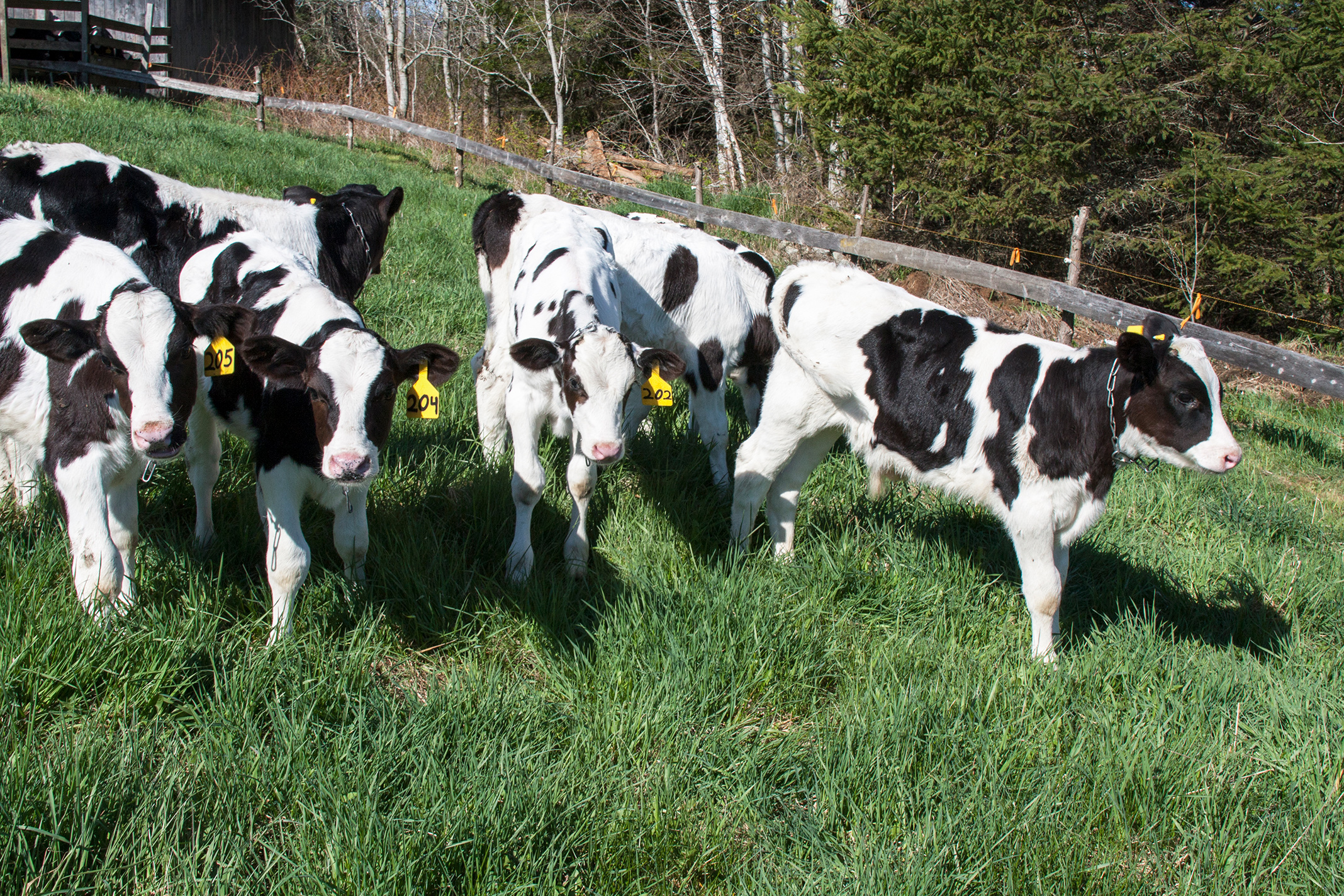
Just like you have favorite foods, Lima Bean has his favorite species of grass. While garden lawns typically have only one or two species of grass that are chosen because they look pretty, a healthy pasture produces many kinds of grasses. Grass is an important part of the food chain, capturing the energy from the sun and converting it into food for cows. Farmers choose different species of grass to provide a range of nutrients to grazing animals. In turn, the animals are selective about the plants they eat, seeking out the most nutritious grasses.
When you see cows grazing, you might think that they are using their teeth to bite off grass, but they are not. Cows don’t have upper front teeth; they wrap their long tongues around the grass, brace their tongues against the roofs of their mouths, and pull. Then, they roll the grass around in their mouths to form a ball, called a “bolus,” and swallow it whole.
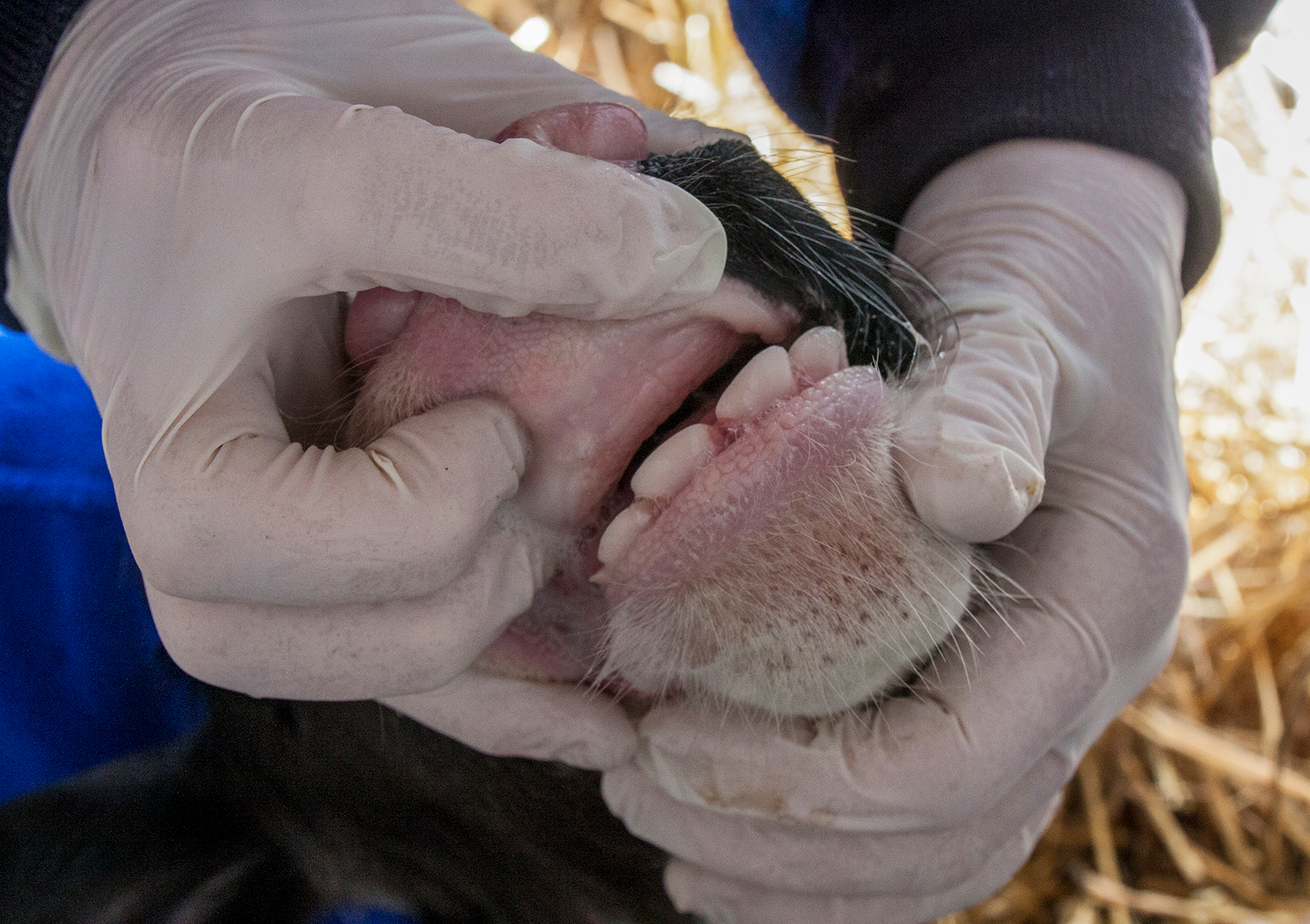
Since the grass was swallowed without much chewing, the first step is to regurgitate (a polite way of saying “throw up”) a bolus of grass back into the mouth from the rumen. The cow chews the grass using its flat molar teeth in the back of the mouth with a sideways, grinding motion. This is called “chewing the cud.”
Lima Bean and all other animals that live on grasses are a kind of mammal called a “ruminant.” The word comes from the Latin, meaning “to chew over again.” There are over one hundred and fifty wild and domestic species of ruminants, including sheep, goats, deer, buffalo, giraffe, antelope, and reindeer. Ruminants have evolved a specialized stomach and digestive system that enables them to thrive and grow by eating just grass.
A cow’s stomach has four chambers, while human stomachs and those of most mammals have only one. The first and largest chamber in a cow’s stomach is called the rumen and is about the size of a large garbage can. Once the rumen is full of grass, the cow begins the process of digestion.
Saliva is an important part of a cow’s digestive system. It wets the food so it is easier to swallow and provides a liquid base in which to grow the millions of bacteria and other microorganisms that live in the rumen and help the cow digest grass. An adult cow makes fifty pounds of saliva every day! Each bolus might be chewed fifty to sixty times before being swallowed again. Then another bolus is regurgitated and chewed.
A cow spends eight hours a day chewing its cud. Once the grass is broken down into small-enough pieces, it passes from the first chamber of the stomach through three more chambers—called the reticulum, omasum, and abomasum—to complete the process of digestion. Human stomachs have only one compartment, so we are not designed to absorb nutrients from grass like cows do.
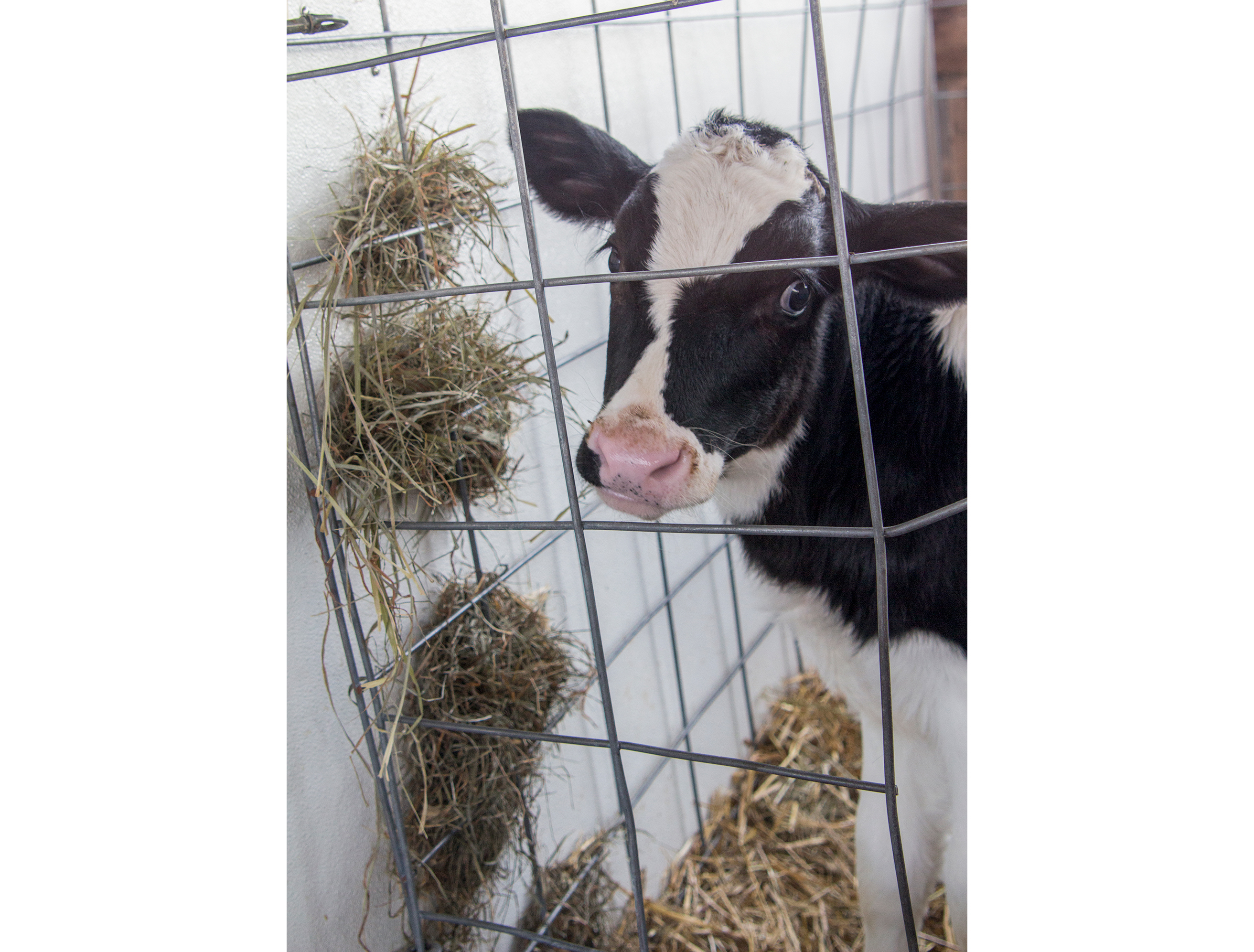
When Lima Bean was a newborn calf, his stomach wasn’t able to digest grass either; the first two chambers of his stomach were not yet mature. But Lima Bean began nibbling on hay (sun-dried grass) and a specialized feed when he was a few weeks old, and slowly his stomach learned how to digest grass. By the time he was two months old, all four of his stomach compartments were working. However, his digestive system didn’t fully develop until he was six to nine months old.
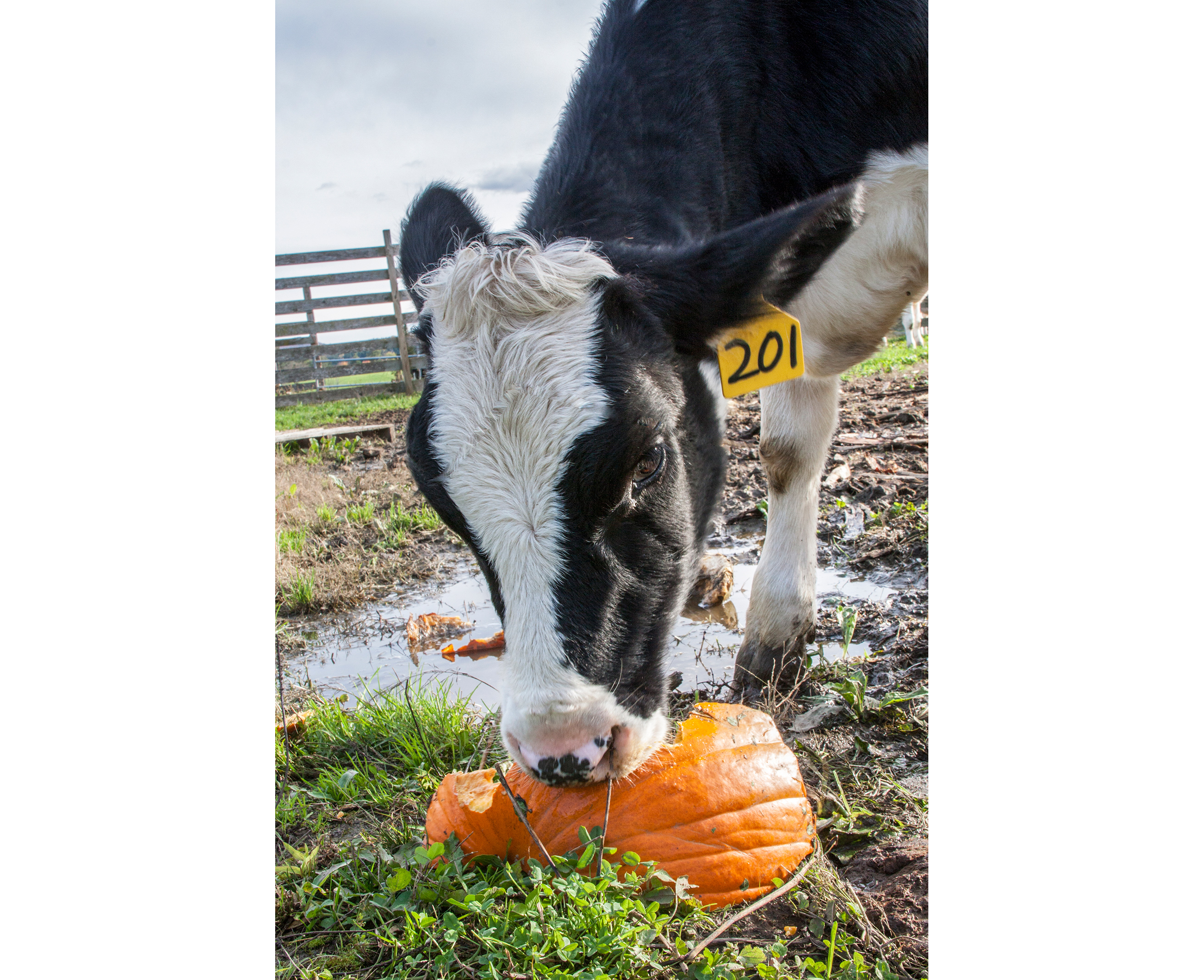
On Snug Valley Farm, the Nottermanns also grow pumpkins. Lima Bean thinks pumpkins are a treat!
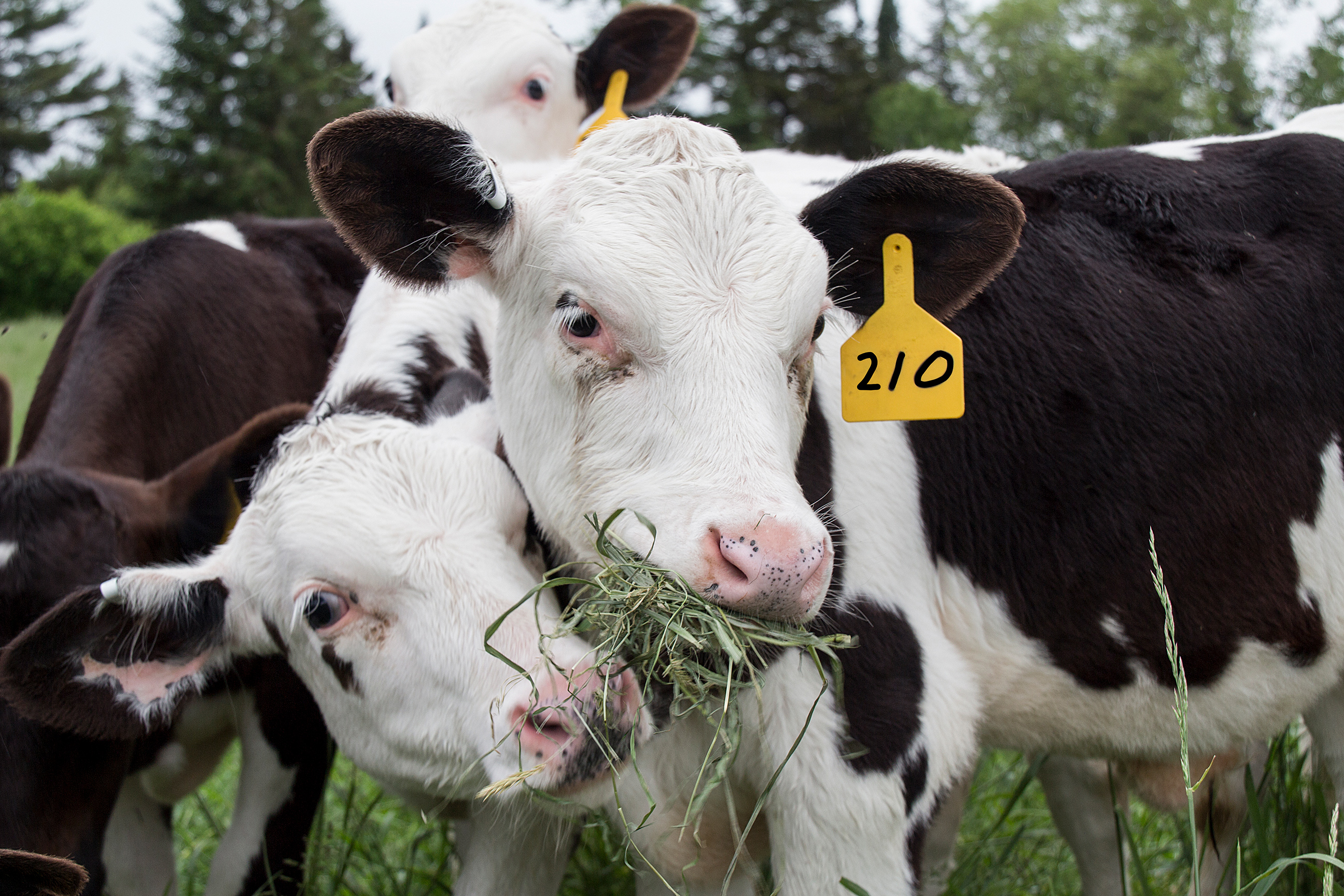
In the spring, summer, and fall, Lima Bean and his buddies graze on pasture. Grasses have evolved so that the cow can rip off the top part of the grass and it will grow back—given enough time between bites. This means Lima Bean doesn’t kill the grass he eats; he merely gives it a “haircut.”
Hay, which is dried grass, is grown during the summer months. After the grass is cut and dried, it is rolled into large round bales each weighing about a thousand pounds. These are stored end-to-end and covered in plastic to keep them dry.
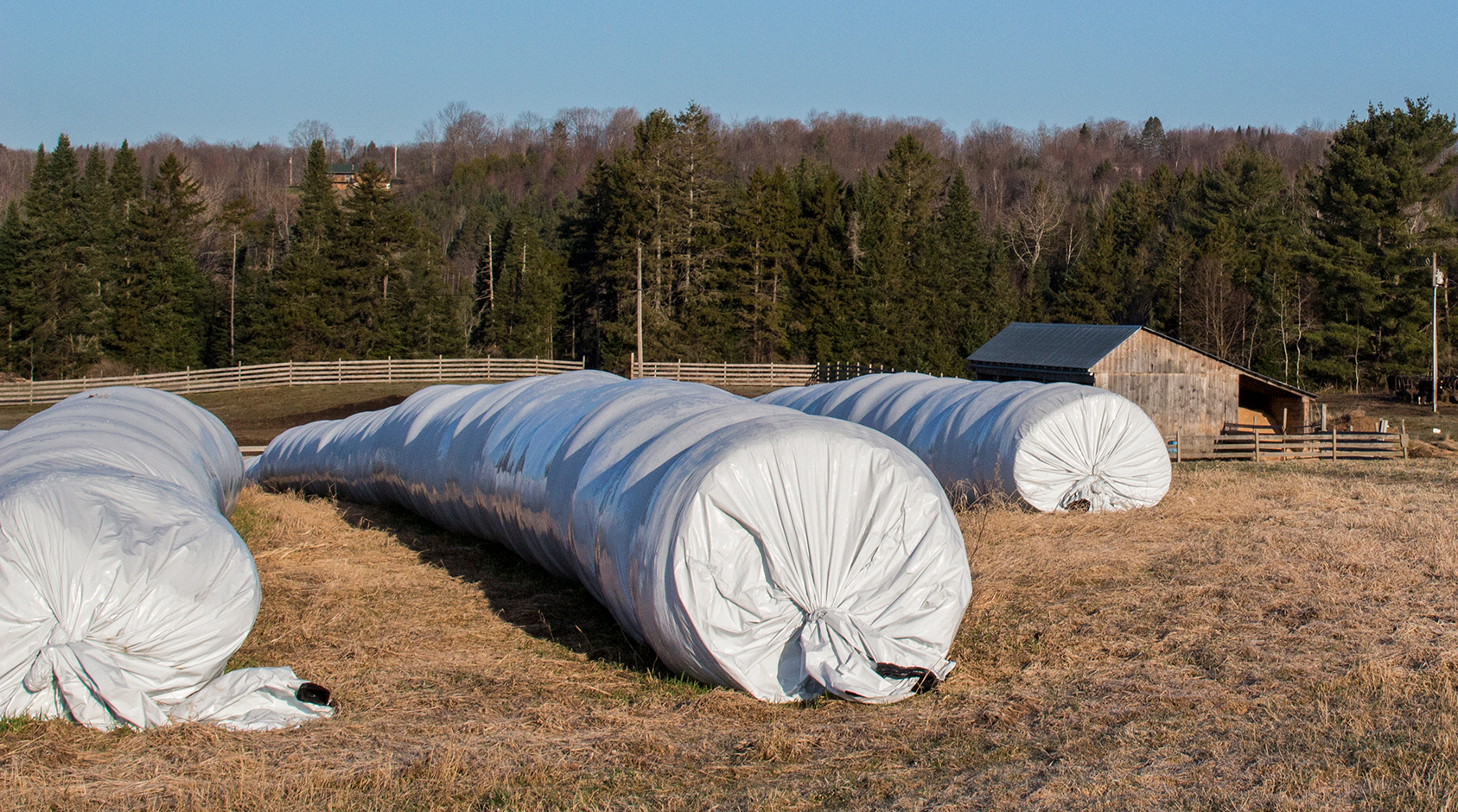
To fertilize the hay fields, all of the manure and used bedding from the calf barn and winter shelters for the older animals are composted in long piles. These piles are turned over periodically to break down the manure into nutrient-rich, natural organic fertilizer. In the fall, aged compost is spread on the hay fields to fertilize them and ensure a healthy crop of hay for the next year.